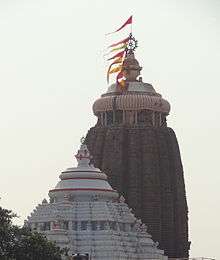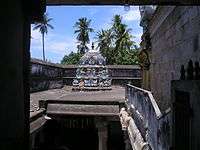Vimana (architectural feature)

Vimana (Tamil: விமானம்) is a term for the tower above the Garbhagriha or Sanctum sanctorum in a Hindu temple.[1][2]
Architecture

In Akash (Hindi)/Vannam(Tamil)/Aakasha (Kannada/Sanskrutham),The Huge Power with all Graha`s including Nathstra`s give Akarshana Sakthi to all People Without any Cost. A typical Hindu temple in Dravidian style may have multiple gopurams, typically constructed into multiple walls in tiers around the main shrine. The temple's walls are typically square with the outer most wall having four gopuras, one each on every side, situated exactly in the center of each wall. The sanctum sanctorum and its towering roof (the central deity's shrine) are also called the Vimana. Generally, these do not assume as much significance as the outer gopurams, with the exception of a few temples where the sanctum sanctorum's roofs are as famous as the temple complex itself.

Famous Shrines
The kanaka-sabai (Golden stage) at Thillai Nataraja Temple, Chidambaram is another example. This particular shrine is entirely covered with golden plates but is different in its structure and massive in size when compared to most other Vimanas. Historical evidence states that during 9th century Parantaka Chola I funded to cover this Vimana with ornamental gold and it retains it glory even today.
The Ananda Nilayam vimanam of the Tirumala Venkateswara Temple is a famous example where the gopuram of the main shrine occupies a very special place in the temple's history and identity.
Meenakshi Sundareswarar Temple has two golden vimanas,[3] the huge one for Lord Shiva and the second one for His consort Meenakshi.
The Vimana of the Brihadeeswarar Temple in Tanjore is another example, with a very exaggerated height. This form is not very common.
Gallery
 Tirunallur Vimanam
Tirunallur Vimanam
See also
| Wikimedia Commons has media related to Vimanas (architecture). |
Notes
- ↑ "Glossary". art-and-archaeology. Retrieved 2007-02-10.
- ↑ Adam Hardy. Indian temple architecture: form and transformation : the Karṇāṭa Drāviḍa.
- ↑ "Towers". Archived from the original on 10 September 2016.